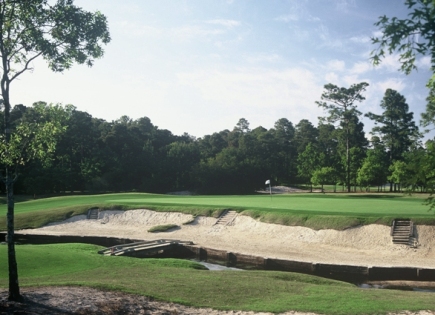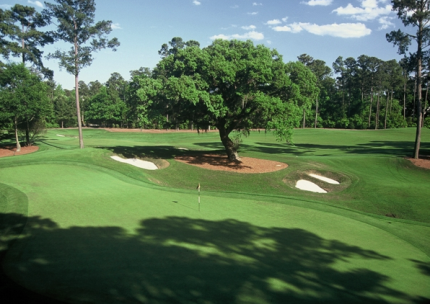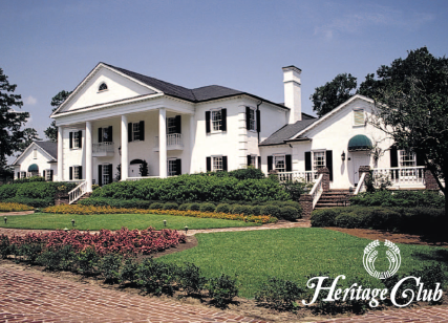Detailed description of Litchfield Resort - Litchfield Country Club
Litchfield Resort - Litchfield Country Club is a Semi-Private 18 holes golf course located in Pawleys Island,South Carolina .
Litchfield Resort - Litchfield Country Club first opened for play in 1966. The course was designed by Willard Byrd.
This course is one of the oldest on the Grand Strand and has matured gracefully over the years. Shot accuracy is important on this classic design. The most difficult hole is #11, a 424-yard, par 4, featuring a severe dogleg fairway.
Par for the course is 72. From the back tees, the course plays to 6,752 yards. From the forward tees, the course measures 5,308 yards. The longest hole on the course is # 16, a par-5 that plays to 538 yards. The shortest hole on the course is # 17, a par-3 that plays to 184 yards from the back tees.
Watch out for # 3, a 425-yard par-4 challenge and the #1 handicap hole on the course. The easiest hole is # 17, a 184 yard par-3.
$21 (cart included), played on Saturday, February 2008 at noon
Enjoyed,but slow play. Rangers do not help speed up play.
Latest Golf Course Reviews
-
1
by Brian Clark 2023-10-08
-
2
by Brian Clark 2023-10-08
-
3
by Brian Clark 2023-10-08
-
4
by soundhar G 2023-10-07
-
5
by Brian Clark 2023-10-05
-
6
by Brian Clark 2023-10-05












Guest (cart included), played on Monday, November 2017 at 9:33 AM
Litchfield Country Club on Pawleys Island opened for play in 1966 and is one of the original eight courses built on the Grand Strand. Over the years, the course has evolved and changes have been made but for the most part, Litchfield Country Club has maintained many of its original features, including player-friendly green complexes that leave room for bump-and-run approach shots. Litchfield carries with it a proud Lowcountry tradition and is built on the former grounds of one of the largest rice plantations on the Waccamaw Neck, as evidenced by the stately plantation-style clubhouse, which is surrounded by live giant oaks that date back centuries. The golf course was designed by Willard Byrd and has garnered numerous accolades over the years. It has been awarded 4.5 stars by Golf Digest and named one of the magazine’s 2008 “Best Places to Play”. More recently, Litchfield Country Club was voted "2016 Golf Course of the Year" by the Myrtle Beach Area Golf Course Owners Association; an accolade bestowed on a local course, with consideration for course design, conditioning and service all figuring into the equation. Since opening over 50 years ago, Litchfield’s natural Lowcountry beauty has attracted golfers from around the globe. Set amongst towering oak and pine trees, the course is regarded by many as a shot-maker’s course, with several doglegs that require well-placed tee shots in order to have the best angle into some well-protected greens. The Blue Tees are the longest and play 6.692 yards. From back here, the course rating is 72.5 with a slope of 131. Many players will have an enjoyable time from the White Tees (6,295/70.6/128) and still leave with their manhood intact. Seniors will be adequately challenged from the Gold Tees (5,912/68.8/124) while the ladies tees measure out at 5,252 yards (74.4/130). A 5th set of tees has been added for junior players and plays 4,096 yards. Everyone will have a great time at Litchfield Country Club, as long as they play from the tees best represented by their handicap. Litchfield Country Club is full of memorable holes and has some solid par 4 holes; especially the doglegs. Number 6 plays 363 yards from the White tees and requires accuracy off the tee to avoid the large tree on the left at the corner of the dogleg. A fairway or hybrid iron off the tee may be all this required here. Water creeps in up against the fairway on the right side about 80 yards from the green. There’s sand all around the green, so you’ll need to hit an accurate approach shot. At a depth of only 22 feet, number 6 is one of the smaller greens on this layout. Number 9 (Par 4, 339 yards from the White tees) is a very narrow dogleg right. Best to leave driver in the bag here too. A tee shot short of the first fairway bunker on the left will leave a short pitch shot on to a relatively small, flat green, protected by sand front left and front right. Because of the positioning of the sand, odds are you will have to fly your approach shot on. A short – yet challenging – way to finish the front nine. Number 11 (par 4, 387 yards from the White tees) is one of the more challenging doglegs on the course, because of where the bend is positioned. It’s a little over 200 yards from the white tees to reach the dogleg, leaving a long iron into the green. Depending on your position in the fairway off the tee, you may need to shape your approach shot. It’s also complicated by the fact that off the tee, you’re hitting out of a narrow chute with a tree overhanging the fairway on the right. The green is protected in front on either side by sand. Par is a good score here. The par 3 holes are no pushover. From the White tees, the shortest one measures 165 yards. The par-3 12th hole is all about club selection and accuracy. The hole plays 189 yards from the White tees; spray the ball left or right off the tee and you’re bringing the trees into play. The front of the green is open with sand on the other three sides so if you hit it straight and short, you’ve still got a shot at getting up and down. A good tee shot can have you writing down a favorable number on the scorecard. As a whole, the par 5 holes at Litchfield Country Club offer a lot of variety and the emphasis is on shot making and placement rather than distance. Number 13, at 498-yards from the White tees, is a soft dogleg left with water all the way down the left side and trees positioned off the tee that make challenging the water almost a necessity. The landing area is fairly generous, if you don’t mind water hanging out ominously on the left. That will leave a short-iron approach shot of around 100 yards into a small green surrounded by sand and water left and behind if you really get crazy. Last Word: Litchfield Country Club is very player-friendly for the ladies. There are no forced carries off the tee over water with the exception of the par 3, 4th, and the bunkers are pretty easy to hit out of. Men can make the course as easy or as tough as they want, all predicated by which tees they choose to play from. The Bermuda greens are in great shape and hold shots well. They feature modest undulations with no unnecessary challenges such as multiple tiers. Being able to work the ball left and right is a distinct advantage because of the doglegs. Club selection off the tee – especially for a first timer – can be a challenge, but gets easier the more often you play. Driver isn’t required on a lot of holes; hitting it a specified distance off the tee is a better approach. This is where a yardage book – available in the pro shop – can be an invaluable tool. There are many reasons Litchfield Country Club is highly coveted by golfers who flock to the Myrtle Beach area on golf vacations each year and also by those who live here year round. The course drains well and it’s highly likely that the course – and cart paths – are open when surrounding courses are not. At Litchfield Country Club, walking is permitted anytime. The course is relatively flat and the tee boxes are in close proximity to the previous green, making it an easy and enjoyable walk. Pace of play is important as well; our foursome played in a little under four hours, without any prompting from course marshals. All in all, Litchfield has a country club atmosphere and first-class accommodations; it’s a sure bet for golfers who enjoy the finer things in life. Litchfield Country Club is a proud member of the Waccamaw Golf Trail, America’s most awarded golf trail.